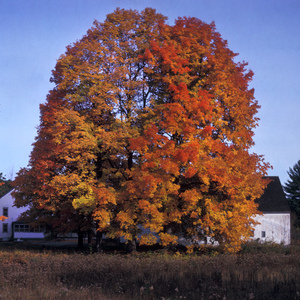General Description
Bloom Description: No flowers, fine textured plant with deep yellow fall color.
Growth Habit & Shape: Dennstaedtia is a long-creeping fern (new fronds come up more than 1" apart on the rhizome) that runs through the soil and forms large colonies. It has fine-textured, triangular fronds. They are covered with a layer of fine hairs that add to the soft texture of the plant.
Soil Preferences: Not a fussy species. It is allelopathic meaning that it modifies the habitat by releasing toxins that discourage the growth of other plants.
Root Description: The roots are long creeping rhizomes that spread quickly.
Garden Uses: Not a plant for small or detailed gardens. However, it is a good colonizer and thrives in areas where other plants will not grow. Great for large, single species sweep.
Best Management & Maintenance: This fern will grow rapidly once introduced. Be sure to select the correct place for this aggressive fern. Its beautiful in natural settings and places where other plants don't thrive such as under maple trees (with a lot of surficial roots).Not recommended for a garden setting.
Common Problems: None.
Benefits
Ornamental Value: Fine textured leaves and beautiful yellow fall color. Perfect for big sweeps.
Wildlife Benefits: Deer will not eat this plant.
Other Practical/Environmental Benefits: Dennstaedtia can be used for soil stabilization. Its fast spread and tolerance of both sun and shade make it appropriate for growing in difficult areas.
Use in place of: Non-native and/or invasive groundcovers like vinca or English ivy.
Ecology
Habitat:
Rocky slopes, meadows, woods, stream banks, and roadsides, in acid soils.
Response to Disturbance: Dennstaedtia as a highly adaptable fern would easily take advantage of any disturbance. It is quick to cover open areas because it is able to grow in sun or shade, tolerate moist or very dry soils, and is allelopathic.
Native State Distributions:
Canada: N.B., Nfld., N.S., Ont., P.E.I., Que.
USA: AL, AR, CT, DE, GA, IL, IN, KY, ME, MD, MA, MI, MO, NH, NJ, NY, NC, OH, PA, RI, SC, TN, VT, VA, WV, WI.
Wetland indicator status: UPL
Companion Plants:
This plant is a good understory to various tree species or large shrubs.
References
Return to Top

